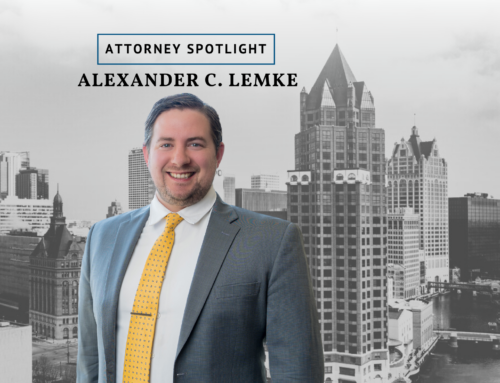Choice of Entity Corner
Introduction
The concept of “choice-of-entity” has more application in the context of 501(c)(3) organizations than might appear at first glance. Apart from the form of entity through which an organization will seek exemption under Code Sec. 501(c)(3), choice-of-entity considerations arise in a number of contexts, particularly: (i) the formation of taxable subsidiaries (a counterintuitive, but often effective, strategy for preserving exempt status); (ii) the use of “disregarded entities” (particularly single-member LLCs) for purposes of limited liability and operational efficiency; and (iii) the formation of partnerships and joint ventures with for-profit enterprises (a practice that is widespread within, but by no means limited to, the healthcare field).
Eligible Exempt Entity Forms
Exemption under Code Sec. 501(c)(3) is, by its terms, limited to “[c]orporations, and any community chest, fund, or foundation.” This has been construed to include unincorporated associations, but exclude partnerships as such.1 However, an eligible entity (which may include an LLC or a partnership) that claims exemption as a separate entity is treated as an association, rather than as a partnership or disregarded entity, during the period in which it claims exemption or is determined to be exempt.2 Nevertheless, the passthrough nature of LLCs does present some hurdles.
The IRS has indicated that an LLC seeking exemption under Code Sec. 501(c)(3) must satisfy 12 conditions—the most significant of which is that the LLC may not have any members other than: (i) 501(c)(3) organizations, (ii) governmental units or (iii) wholly owned government instrumentalities.3 In the IRS’s view:
Because state laws generally provide LLC members with ownership rights in the assets of the LLC, the Service is concerned that allowing non-exempt members would result in potential inurement problems. Thus, the LLC cannot have private shareholders or individuals as members, and its organizing documents must state a purpose to further the members’ charitable purposes.4
But this position does not appear to account for the possibility that such an LLC might, through an operating agreement, properly forbid any rights to distributions that would otherwise constitute an impermissible private benefit/private inurement. Likewise, this position preceded the advent of “noneconomic” LLC membership interests under second-generation LLC statutes—which would also appear to avoid the difficulties cited by the IRS.5
Taxable Subsidiaries
There are a number of reasons that a 501(c)(3) organization might consider forming a taxable subsidiary. Apart from reducing liability exposure to third parties, three of the biggest benefits of forming a taxable subsidiary also deal with “reduction”—namely:
- reducing the risk that the total time and resources dedicated to an unrelated business activity might jeopardize the organization’s exempt status;
- reducing unrelated business taxable income (UBTI) chargeable to the 501(c)(3) organization; and
- reducing the amount of information subject to public scrutiny via informational and unrelated business income tax returns.
The Operational Test of Code Sec. 501(c)(3)
Nothing in Code Sec. 501(c), or the regulations thereunder, prohibits the formation and ownership of a taxable subsidiary by a tax-exempt organization.6 Rather, the principal limitation on the formation of taxable subsidiaries is the so-called “operational test” for exemption under Code Sec. 501(c)(3), particularly the “primary activities” prong, which provides:
An organization will be regarded as operated exclusively for one or more exempt purposes only if it engages primarily in activities which accomplish one or more of such exempt purposes specified in section 501(c)(3). An organization will not be so regarded if more than an insubstantial part of its activities is not in furtherance of an exempt purpose.7
The opacity of this provision has prompted one U.S. District Court to quip: “Sadly, the last sentence of that section is a horrible amalgamation of negatives arranged like an inside joke prompting laughter only from seasoned and sadistic bureaucrats. In plain English, it means that an organization cannot be exempt while devoting a substantial portion of its activities to non-exempt purposes.”8
The key issue in analyzing the effect of a taxable subsidiary on an organization’s continued 501(c)(3) status is whether the commercial activities of such taxable subsidiary will be imputed to the tax-exempt parent. For federal income tax purposes, a parent corporation and its corporate subsidiary are considered separate taxable entities so long as the purposes for which the subsidiary is incorporated are the equivalent of business activities or the subsidiary subsequently carries on business activities.9 Where a corporation is organized with a bona fi de intention that it will have some real and substantial business function, its existence may not generally be disregarded for tax purposes.10 However, where the parent corporation so controls the affairs of the subsidiary that it is merely an instrumentality of the parent, the corporate entity of the subsidiary may be disregarded.11
In LTR 9442035, the IRS held that, where the respective taxable subsidiaries of two 501(c)(3) organizations were separately incorporated, engaged in distinct activities and observed separate corporate formalities—and (importantly) the 501(c)(3) organizations would not be involved in the day-to-day management or operation of their subsidiaries—the taxable activities of the subsidiaries would not be attributed directly to their 501(c)(3) parents. The IRS held further that the tax-exempt status of the organizations in question would not be jeopardized by virtue of the fact that they may incidentally perform services for (or provide assets to) their taxable subsidiaries, because such transactions would be at arms’ length and generate less than five percent of the total revenues of such organizations.12
The essentials of this test for separate taxable existence apply regardless of whether the entity in question is a partnership or a corporation.13 Thus, in order to avoid having the operations of a taxable partnership imputed to the 501(c)(3) owner, the 501(c)(3) owner must avoid control over the affairs of the partnership. This would seem to rule out any structure in which the 501(c)(3) organization would be serving as a “general partner,” or the “manager/managing-member” of an LLC. However, a taxable corporate subsidiary that is not controlled by the 501(c)(3) (as described above) could serve in such a general partner managerial role.14
Minimizing UBTI
Where the separate taxable subsidiary is a C corporation, the 501(c)(3) owner will typically realize income in the form of dividends or capital gain from the sale of its stock—both of which are excluded from the definition of UBTI.15 However, by operation of Code Sec. 512(b)(13), a 501(c)(3) organization may be required to include certain amounts (e.g., interest, rents and royalties) as UBTI where the taxable subsidiary is considered a “controlled entity.” While a lack of voting or managerial control over the taxable subsidiary may suffice for purposes of rendering the subsidiary a separate entity under the operational test, the test for “controlled entity” status under Code Sec. 512(b)(13) is whether the 501(c)(3) owns—by vote or value—more than 50 percent of the stock in such corporation.16
By contrast, where the separate taxable subsidiary is a partnership, the 501(c)(3) partner is required to include its share (whether or not distributed) of the gross income of the partnership attributable to an unrelated trade or business in determining UBTI.17 A similar rule obtains with respect to the passthrough items of income, loss or capital gain from S corporation stock owned by 501(c)(3) organization.18
It should also be noted that there may be additional limitations where the 501(c)(3) organization is a “private foundation.” Code Sec. 4943 imposes an excise tax on the so-called excess business holdings of a private foundation. In the case of incorporated business entities, an excess business holding exists where the private foundation owns more than 20 percent of the voting stock (increased to 35 percent where it can be established that a third party has effective control of the business). However, any equity interests that do not have voting power shall be classified as nonvoting stock and treated as permitted holdings.19 A similar rule applies in the case of partnerships (including limited partnerships) or joint ventures, with the term “profits interest” and “capital interest” substituted for “voting stock” and “nonvoting stock,” respectively.20
Public Disclosure Requirements
Prior to the enactment of the Pension Protection Act of 2006 (“PPA”), 501(c)(3) organizations were required to make available for public inspection and copying only the annual information returns required to be filed under Code Sec. 6033 (Forms 990, 990-EZ, and 990-PF).21 Thus, it used to be possible for a 501(c)(3) organization to shield a significant amount of information about its unrelated business activities from scrutiny by spinning-off such activities into a separate taxable subsidiary that would not be required to make its tax returns public.
However, the PPA amended Code Sec. 6104(d)(1)(A)(ii) to require that each 501(c)(3) organization make available for public inspection and copying “any annual return filed under section 6011 which relates to any tax imposed by section 511 (relating to imposition of tax on unrelated business income of charitable, etc., organizations) . . . by such organization.”22 The Form 990-T (Exempt Organization Business Income Tax Return) contains many of the same detailed disclosure requirements as the Form 990 (such as the compensation of officers, directors and trustees)—but not all. In particular, the Form 990-T does not require detailed disclosures of the compensation payable to “Key Employees, Highest Compensated Employees, and Independent Contractors.” Accordingly, reducing public disclosure remains a meaningful consideration.
Disregarded Entities
The IRS has indicated that a single-member LLC (“SMLLC”) that is wholly owned by a 501(c)(3) organization will be treated as disregarded, unless it elects otherwise.23 A disregarded SMLLC will be treated as part of its tax-exempt owner for purposes of Subchapter F (Code Sec. 501 et. seq.), Chapter 42 and information on unrelated business income tax reporting purposes. Moreover, the activities of a disregarded SMLLC will be attributed directly to the charitable parent for purposes of the operational test of Code Sec. 501(c)(3). Thus, a 501(c)(3) organization cannot take actions through an SMLLC that it could not otherwise take directly.24
Up until this year, the IRS had specifically declined to say whether a contribution made directly to a disregarded SMLLC wholly owned by a 501(c)(3) organization would be treated as a charitable contribution under Code Sec. 170.25 While it is difficult to articulate a sensible reason not to allow such treatment, the safer practice has been to have all donations run through the 501(c)(3) parent directly, rather than its disregarded SMLLC. However, on July 31, 2012, the IRS issued Notice 2012-52, in which it confirmed that, provided all other requirements of Code Sec. 170 are met, a contribution to a disregarded SMLLC that is wholly owned and controlled by a U.S. charity will be treated as a contribution to a branch or division of such U.S. charity.26
This was a welcome clarification for the many U.S. charities that organize SMLLCs for limited liability and other reasons.
However, Notice 2012-52 limits its application to disregarded entities organized in or under the law of the United States, a U.S. possession, a state or the District of Columbia. Thus, the IRS has conspicuously left open the question of whether a contribution to a foreign entity that is wholly owned and controlled by a U.S. charity might also receive direct contributions that would be deductible under Code Sec. 170. Presumably, any foreign entity eligible to be treated as disregarded pursuant to an entity classification election on Form 8832 should so qualify. Again, however, the safer practice may be to have all such donations run directly to the 501(c)(3) parent.
Partnerships and Joint Ventures with For-Profit Enterprises
A 501(c)(3) organization may form and actively participate in a partnership (including an LLC treated as a partnership for tax purposes) and still meet the operational test. However, participation in such partnership must further a charitable purpose, and the partnership arrangement must permit the exempt organization to act exclusively in furtherance of its exempt purposes, and only incidentally for the benefit of any for-profit partners.27
Similarly, a 501(c)(3) organization may enter into a management contract that would give a private party the authority to conduct day-to-day activities on behalf of the exempt organization, and to direct the use of the organization’s assets. However, the 501(c)(3) organization must retain ultimate authority over the assets and activities being managed. Moreover, the terms and conditions of the management contract must be reasonable (particularly as regards compensation, duration and termination).28 In all events, if a private party is allowed to control or use the 501(c)(3) organization for the benefit of the private party—and the benefit is not merely incidental to the accomplishment of exempt purposes—then the 501(c)(3) organization’s exempt status may be jeopardized.29
The subject of joint ventures and partnerships between 501(c)(3) organizations and for-profit concerns has been most frequently encountered (and analyzed) in the context of nonprofit hospitals. This is not surprising as hospitals are increasingly turning to alternative delivery models in an effort to contain the ever-rising costs of healthcare.
Revenue Ruling 98-15
Much of the modern groundwork for analyzing partnerships and joint ventures between tax-exempt organizations and for-profit concerns was laid out in Rev. Rul. 98-15. In this ruling, the IRS considered two different scenarios in which a tax-exempt hospital proposed to enter into a partnership with a for-profit entity to operate the hospital’s facilities through a jointly owned LLC to be managed by an outside for-profit entity. In the first scenario (LLC #1), the IRS concluded the hospital’s participation in the proposed transaction would not jeopardize its exempt status. By contrast, the IRS held that the formation and operation of the partnership in the second scenario (LLC#2) would cause the tax-exempt member to violate requirements of Code Sec. 501(c)(3).
In order to appreciate the significance of the differences in the governing documents of LLC #1 and LLC#2, it is important to understand that the provision of healthcare services and/or the promotion of health, standing alone, are not sufficiently charitable purposes to support exemption under Code Sec. 501(c)(3).30 Nonprofit hospitals have long been recognized as charitable organizations under Code Sec. 501(c)(3), but not strictly due to the promotion of health. Rather, charitable status is based on the fact that such nonprofit hospitals operate primarily for the benefit of the community—as opposed to a private interest. This “community benefit” doctrine is a facts-and-circumstances test, only one element of which is whether the organization provides free care to indigents.31
With this as background, the IRS held that the formation and operation of LLC #1 did not threaten the tax-exempt member’s exempt status because its governing documents required that LLC #1 operate any hospital it owns in a manner that furthers charitable purposes by promoting health for a broad cross section of its community. Moreover, the governing documents explicitly provided that the governing board—the majority of which was appointed
by the tax-exempt member—had an affirmative duty to operate LLC #1 in a manner that furthered this charitable purpose, which duty would override any duty the board might have to operate LLC #1 for the financial benefit of its owners.
By contrast, the governing documents of LLC #2 simply provided that the purpose of LLC #2 was to construct, develop, own, manage, operate and take other action in connection with operating the healthcare facilities it owns and engage in other health care-related activities. These are certainly all fine purposes, but entirely neutral on their face. Moreover, because the tax-exempt member would share control of LLC #2’s governing board with its for-profit partner on a 50/50 basis, the tax-exempt member would not be able to initiate programs within LLC #2 to carry out its exempt purposes without the agreement of at least one of the for-profit member’s appointees (whose profit-maximizing interests would not necessarily be fettered by any charitable concerns).
For practitioners analyzing potential joint ventures between charitable and for-profit organizations, the two major lessons drawn from Rev. Rul. 98-15 had been: (i) the tax-exempt entity must possess the ability to affirmatively control the activities of the joint venture (especially where a significant portion of the charity’s assets are to be contributed to the venture); and (ii) the organizational documents of the joint venture should clearly state the exempt purposes to be served and expressly prioritize these purposes over any ordinary business purpose.32
Revenue Ruling 2004-51
Fortunately, the lessons of Rev. Rul. 98-15 were further explicated in Rev. Rul. 2004-51—this time in a non—healthcare-related context.33 The facts were as follows:
M was a university that had been recognized as a public charity. As part of its educational programs, M offered summer seminars to enhance the skill level of elementary and secondary school teachers. In order to expand the reach of its teacher training seminars, M formed a domestic LLC (“L”) together with O, a for-profit entity that specialized in producing interactive video training programs. The sole purpose of L was to offer teacher training seminars at off-campus locations using interactive video technology. M and O each held a 50-percent ownership interest in L, which was proportionate to the value of their respective capital contributions to L.
Additionally, the governing documents of L provided that:
(i) L would be managed by a governing board comprised of three directors chosen by M and three directors chosen by O;
(ii) L would arrange and conduct all aspects of the video teacher training seminars, including
advertising, enrolling participants, arranging for the necessary facilities, distributing the course materials and broadcasting the seminars to various locations;
(iii) M had the exclusive right to approve the curriculum, training materials and instructors and to
determine the standards for successful completion of the seminars;
(iv) O had the exclusive right to select the locations where participants can receive a video link to the seminars and to approve other personnel (such as camera operators) necessary to conduct the video teacher training seminars. All other actions required the mutual consent of M and O;
(v) the terms of all contracts and transactions entered into by L with M, O and/or any other parties were required to be at arm’s length, and all contract and transaction prices had to be at fair market value determined by reference to the prices for comparable goods or services;
(vi) L’s activities were limited to conducting the teacher training seminars, and L could not engage in any activities that would jeopardize M’s exemption under Code Sec. 501(c)(3); and
(vii) all returns of capital, allocations and distributions were to be made in proportion to the members’ respective ownership interests.
The first question presented was whether O would continue to qualify as a 501(c)(3) organization when it contributes a portion of its assets to and conducts a portion of its activities through L. The IRS ruled that M’s participation in L, taken alone, would not affect M’s continued qualification for exemption as an organization described in Code Sec. 501(c)(3). Unlike the transaction at issue in Rev. Rul. 98-15—in which an exempt hospital’s entire operation would be contributed to a joint venture—the activities that M would be considered as conducting through L were not a substantial part of M’s overall charitable activities within the meaning of Code Sec. 501(c)(3) and §1.501(c)(3)-1(c)(1).
The second question was whether M would be subject to UBIT under Code Sec. 511 on its distributive share of the LLC’s income. Here, the IRS ruled that the facts established that M’s activities conducted through L constituted a trade or business that was substantially related to the exercise and performance of M’s exempt purposes and functions. In this regard, the manner in which L conducted the teacher training seminars contributed importantly to the accomplishment of M’s educational purposes, and the activities of L were substantially related to M’s educational purposes.34 Accordingly, M would not be subject to unrelated business income tax on its distributive share of L’s income.
Rev. Rul. 2004-51 is notable for the fact that the IRS appears to be blessing the notion of a tax-exempt/for-profit joint venture in which the exempt organization and for-profit entity share control on a 50/50 basis. On its face, this would seem to be contrary to the earlier guidance set forth in Rev. Rul. 98-15. However, a close read of Rev. Rul. 98-15 at least suggests such a possibility.
In Rev. Rul. 98-15, the IRS’s stated concern over the shared management of LLC #2 directly followed-on from the observation: “In the absence of a binding obligation in [LLC #2]’s governing documents for [LLC #2] to serve charitable purposes or otherwise provide its services to the community as a whole, [LLC #2] will be able to deny care to segments of the community, such as the indigent.”35 Significantly, the governing documents of the LLC under consideration in Rev. Rul. 2004-51: (i) expressly limited the LLC’s activities to the conduct of teacher training seminars (which was “related” to the exempt purpose of M); (ii) gave M sole control over those aspects of the seminars that made them “related” to its exempt purpose in the first place (e.g., curriculum, materials, standards, etc.), and (iii) expressly forbade any conduct which would jeopardize M’s exempt status.
Thus, stated more simply, the prospect of “deadlock” or inaction resulting from a 50/50 split of control was simply not a problem, because the default rules left the LLC “locked” into a course of conduct that was entirely consonant with M’s exempt purposes.
Conclusion
While 501(c)(3) organizations are typified by their charitable purposes, such organizations often administer significant assets and revenue, and are a source of livelihood for hundreds (if not thousands) of people—think, in particular, of hospitals, universities and churches. Thus, even the most noble of “nonprofits” are not immune to the considerations of mammon. The modern 501(c)(3) organization must face many of the same realities of for-profit concerns—from limiting liability to seeking out new and creative ways of generating income in a difficult economy—and must do so while walking the tightrope of maintaining exempt status. Fortunately, many of the traditional choice-of-entity tools have been adapted to meet this challenge.
Endnotes
1 See McCray & Thomas, Limited Liability Companies As Exempt Organizations—Update, Internal Revenue Service Exempt Organizations Continuing Professional Education Technical Instruction Program for FY 2001, at 27, 29 (hereinafter “McCray & Thomas”).
2 See id. (citing Reg. §301.7701-3(c)(1)(v)(A)).
3 See McCray & Thomas at 29–32.
4 See id. at 30.
5 See, e.g., Section 401(e) of the Revised Uniform Limited Liability Company Act (2006) and Section 401(c) of the ABA Revised Prototype Limited Liability Company Act (2011).
6 See LTR 9442035 (July 29, 1994).
7 See Reg. §1.501(c)(3)-1(c)(1).
8 See St. David’s Health Care System, Inc., DCTX, 2002-1 USTC ¶50,452. (Emphasis added.)
9 See LTR 9442035 (citing Moline Properties, CA-5, 42-2 USTC ¶9728, on writ of certiorari, SCt, 43-1 USTC ¶9464, 319 US 436, 438; T.M. Britt, DC-FL, 68-2 USTC ¶9557, rev’d CA-5, 70-1 USTC ¶9400, 431 F2d 227, 234.
10 See id. (citing T.M. Britt, 431 F2d at 234).
11 See id. (citing Krivo Industrial Supply Co. v. National Distillers and Chemical Corp., CA-5, 488 F2d 1098, 1106 (1973)).
12 See id.; accord LTR 9705028 (Nov. 5, 1996).
13 See Campbell County State Bank, Inc. of Herreid, S.D., 37 TC 430, Dec. 25,165 (1961).
14See LTR 9714016 (Dec. 27, 1996).
15 See Code Sec. 512(b)(1) and 512(b)(5).
16 See Code Sec. 512(b)(13)(D).
17 See Code Sec. 512(c).
18 See Code Sec. 512(e).
19 See Reg. §53.4943-3(c)(2).
20 See Reg. §53.4943-3(c)(2).
21 See Notice 2008-49, IRB 2008-20.
22 See id.
23 See McCray & Thomas at 27
24 See id. at 29
25 See id. at 28
26 See Notice 2012-52, IRB 2012-35.
27 See Rev. Rul. 98-15, 1998-1 CB 718 (March 4, 1998) (citing Plumstead Theatre Society, 74 TC 1324, Dec. 37,257 (1980), aff’d, CA-9, 82-1 USTC ¶9358, 675 F2d 244; Housing Pioneers, 65 TCM 2191, Dec. 48,936(M), TC Memo. 1993-120, aff’d, CA-9, 95-1 USTC ¶50,126, 49 F3d 1395, amended, 58 F3d 401 (9th Cir. 1995)).
28 See id. (citing Broadway Theatre League of Lynchburg, Virginia, Inc., DC-VA, 68-2 USTC ¶9658, 293 FSupp 346).
29 See id. (citing Reg. §§1.501(c)(3)-1(c)(1) & (d)(1)(ii)).
30 See Rev. Rul. 98-15, 1998-1 CB 718 (citing Federation Pharmacy Services, Inc., 72 TC 687, Dec. 36,198 (1979), aff’d, CA-8, 80-2 USTC ¶9553, 625 F2d 804).
31 Redlands Surgical Services, 113 TC 47, Dec. 53,459 (1999).
32 For a more in-depth discussion and analysis of Rev. Rul. 98-15—including some of the limits on its predictive utility—see Michael I. Sanders & Michael J. Grace, When Nonprofits Meet Subchapter K: Joint Ventures and Other Exempt Uses of Passthrough Entities, J. PASSTHROUGH ENTITIES, September–October
1998, at 22.
33 See Rev. Rul. 2004-51, IRB 2004-22.
34 See id. (citing Reg. § 1.513-1(d)(2)).
35 See Rev. Rul. 98-15, 1998-1 CB 718. (emphasis added.)
This article is reprinted with the publisher’s permission from the JOURNAL OF PASSTHROUGH ENTITIES, a bi-monthly journal published by CCH, a Wolters Kluwer business. Copying or distribution without the pub lish er’s permission is pro hib it ed. To subscribe to the JOURNAL OF PASSTHROUGH
ENTITIES or other CCH Journals please call 800-449-8114 or visit www.CCHGroup.com. All views ex pressed in the articles and col umns are those of the author and not necessarily those of CCH or any other person. All Rights Reserved.
© 2016 CCH Incorporated and its affiliates. All rights reserved. Reprinted with permission from the Journal of Passthrough Entities.






